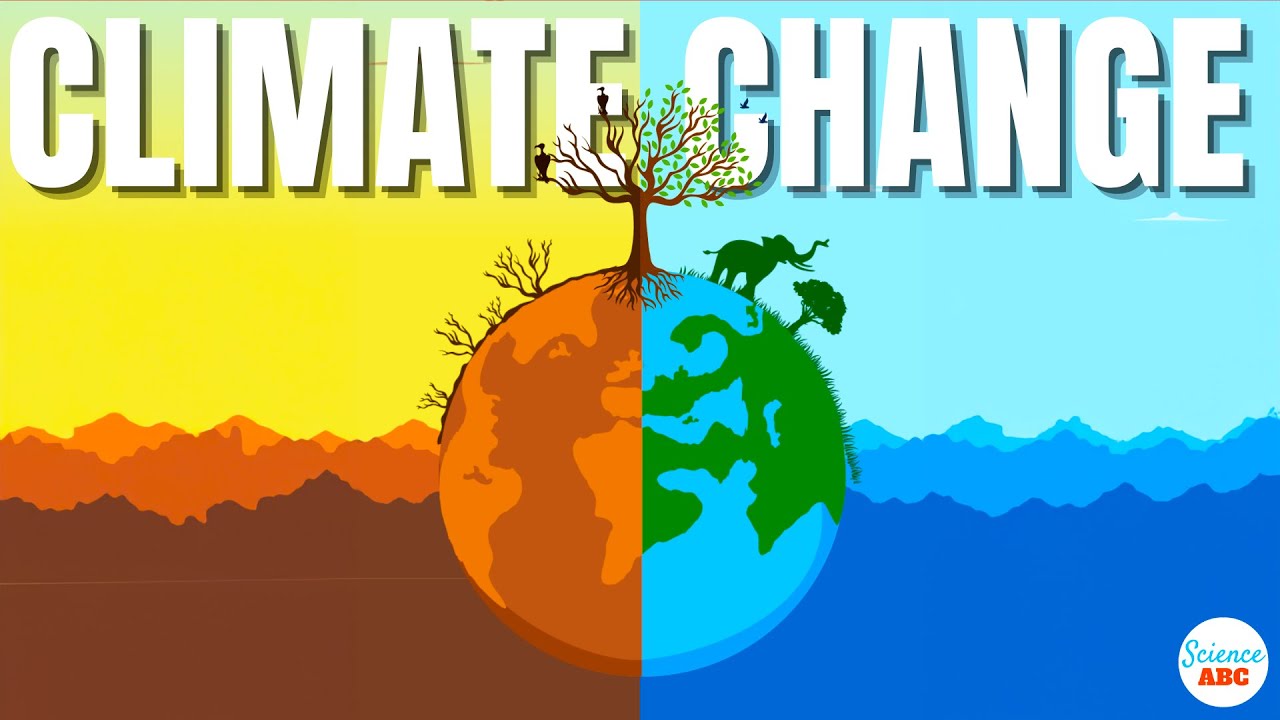5.1 Introduction to Climate Modeling
Summary
TLDRThis video introduces climate modeling, explaining its significance in understanding how rising sea levels and extreme weather events may impact our lives. By using climate models, scientists can simulate various scenarios to predict future climate changes, allowing for informed decision-making. The video illustrates how models represent Earth's climate system through equations and real-world observations, emphasizing the role of physical principles in creating dynamic models. Ultimately, these models help us understand complex interactions within the climate system and inform future observations necessary for effective climate action.
Takeaways
- 🌍 Climate modeling helps predict how rising sea levels and extreme weather events may affect local areas in the future.
- 🔍 Climate models are essential tools for estimating the possible future pathways of global temperatures based on various scenarios.
- 🛠️ Just as we use physical models in architecture and engineering, climate models simulate Earth's climate system to help us understand its dynamics.
- 🧩 Our understanding of the future is often modeled based on past experiences and observations, which we continuously refine with new data.
- ⚙️ Climate models rely on physical principles such as conservation of mass and energy, chemical reactions, and biological processes.
- 📉 The balance of energy flow in climate models can be analyzed through equations that represent stocks, flows, and feedbacks over time.
- 🌡️ An example model demonstrates how changing energy inputs, like solar radiation and greenhouse gases, affects Earth's equilibrium temperature.
- 🌧️ Real-world observations are crucial for testing climate models and ensuring they accurately reflect the Earth's climate system.
- 🌊 Climate models also help identify how excess CO2 from human activities is absorbed by natural systems like plants and oceans.
- 🔄 The modeling process is iterative; as models yield new insights, they can inform further observations and improve our understanding of climate dynamics.
Q & A
What is the primary purpose of climate models?
-The primary purpose of climate models is to help us understand how Earth's climate system works and to predict future scenarios related to rising sea levels and extreme weather events.
How do climate models simulate different scenarios?
-Climate models simulate different scenarios by allowing scientists to adjust various parameters and observe the effects, enabling the exploration of multiple 'what if' scenarios.
What physical principles underpin climate modeling?
-Climate modeling is based on physical principles such as conservation of mass and energy, gravity, and laws of motion, along with knowledge of chemical and biological processes.
How do observations from the real world contribute to climate models?
-Observations inform climate models by providing data on various processes, such as water cycling and carbon exchange, which help refine and improve the accuracy of the models.
What happens to the Earth's temperature in the model when solar energy is turned off?
-When solar energy is turned off in the model, Earth’s temperature drops to about 32 Kelvin (approximately -241°C), as it can only rely on geothermal energy.
What effect does reflection have on Earth's temperature in climate models?
-Reflection reduces the amount of solar energy absorbed by Earth; with a 30% reflection rate, the model predicts a new equilibrium temperature of around -18°C.
What role do greenhouse gases play in the climate model?
-Greenhouse gases absorb radiation from Earth's surface and re-emit it, contributing to the warming of the planet. The model assumes these gases absorb all upward radiation and emit half upward and half downward.
How do climate models compare to real-world temperatures?
-Climate models are continually tested against real-world observations; for instance, the average surface temperature predicted by models is adjusted to align with observed temperatures, which is about 15°C.
What enhancements can be made to climate models to improve accuracy?
-Enhancements include dividing the atmosphere into layers, accounting for specific energy transfer processes, and considering different surface types (e.g., water, rock) to create more realistic simulations.
Why is climate modeling considered an ongoing effort?
-Climate modeling is an ongoing effort because it continually evolves as new observations and insights are gained, improving our understanding of complex climate interactions and refining predictive capabilities.
Outlines

Esta sección está disponible solo para usuarios con suscripción. Por favor, mejora tu plan para acceder a esta parte.
Mejorar ahoraMindmap

Esta sección está disponible solo para usuarios con suscripción. Por favor, mejora tu plan para acceder a esta parte.
Mejorar ahoraKeywords

Esta sección está disponible solo para usuarios con suscripción. Por favor, mejora tu plan para acceder a esta parte.
Mejorar ahoraHighlights

Esta sección está disponible solo para usuarios con suscripción. Por favor, mejora tu plan para acceder a esta parte.
Mejorar ahoraTranscripts

Esta sección está disponible solo para usuarios con suscripción. Por favor, mejora tu plan para acceder a esta parte.
Mejorar ahoraVer Más Videos Relacionados

Climate Change Series – 6. Impacts of Climate Change on Humans

What is Climate Change and What Causes it?

Apa Dampak Nyata Perubahan Iklim Saat Ini?

What's the difference between weather and climate? - BBC News

Climate Change and Global Warming: Explained in Simple Words for Beginners

Climate Change in the Philippines
5.0 / 5 (0 votes)
